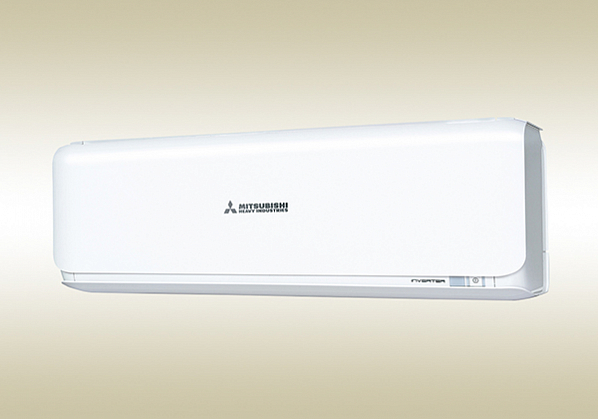
Premiering for the first time in the world, Mitsubishi Heavy Industries Thermal Systems, Ltd., a Group company of Mitsubishi Heavy Industries, Ltd. (MHI), is adopting R454C, a refrigerant with an extremely low global warming potential (GWP), in a 1-horsepower (HP) class residential air-conditioner. The conventional shortcomings of the R454C,for example; inferior heat exchanger performance attributable to it being a mixed refrigerant have been overcome through the use of proprietary technology that optimize the heat exchanger's flow volume and other measures. The company has already developed a demonstration unit of the residential air-conditioner featuring R454C and preparations are underway towards mass production with an eye on an initial launch into the European market, where environmental regulations are particularly stringent.
Residential type air conditioner
The R454C refrigerant has an ozone depletion potential (ODP) of 0 (zero) and a GWP of 146 (CO2=1). The latter value is approximately 1/14th and 1/5th the respective GWP levels of refrigerants currently and most widely used in air-conditioners of small/medium scale: R410A (2090) and R32 (675). The overall global warming impact (GWP x refrigerant volume) from the demonstration unit's refrigerant represents a 91.3% reduction from the level of MHI Thermal Systems' previous model for the European market (Note1).
Worldwide initiatives aimed at stopping global warming were strengthened in October 2016 with the adoption of the "Kigali Amendment" to the Montreal Protocol on Substances that Deplete the Ozone Layer. Named after the capital city of Rwanda where the delegates met, the Kigali Amendment mandates progressive reduction in hydrofluorocarbons (HFC), substances that do not deplete the ozone but do adversely impact global warming (Note2). In addition, since 2015 the member nations of the European Union (EU), where environmental awareness is deeply entrenched, have gradually expanded regulations affecting the sale and usage of substances, including HFCs, that have GWP values of 150 and higher, contributing to global warming. MHI Thermal Systems' development of the world's first small-capacity residential air-conditioner adopting the R454C refrigerant is thus a leading and positive response to these international movements.
Going forward, MHI Thermal Systems will continue to dedicate its resources to developing and marketing high-performance products using low-GWP refrigerants, thereby contributing to protection of the global environment in markets everywhere.
(Note 1) The top-of-the-line SRK25ZSX-S with a piping length of 5m, which adopts the R410A refrigerant.
(Note 2) These substances are subject to the terms of both the Montreal Protocol (1987) and the preceding Vienna Convention for the Protection of the Ozone Layer (1985).






















